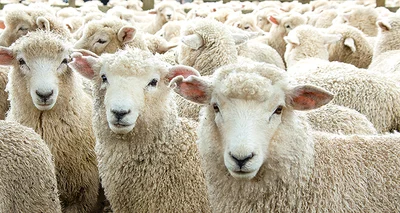Drenches - a sobering reality

Sheep farmers are being asked to test the effectiveness of the drenches they are using in the wake of a sobering summary of drench resistance.
The report by national veterinary laboratory Gribbles Veterinary found 33 per cent of farms tested had trichosytrongylus worms that were resistant to triple combinations.
“In 2017, less than 7 per cent of the tests run showed triple combination resistance in any species and now 33 per cent of cases are showing up triple resistant trichostrongylus,” said Wormwise programme manager Ginny Dodunski.
“A combination (or triple) drench – most farmers will be using these – there are five main classes of drug that are used to treat internal parasites in sheep and cattle; combinations are a mix of two to three of these.
"The idea being that if a worm has the genetics to be resistant to one class of drug, it’s less likely to carry the genes for resistance to two or even three classes of drug,” Dodunski said.
“The use of combination drenches as a means to slow the development of drench resistance was advocated for situations where there was a low level of pre-existing resistance to the individual actives in the drench, and where other known measures to delay drench resistance were also in place,” she said.
“Unfortunately, most farmers didn’t know their resistance status when they started using combos, and the other safety measures (such as not using long-acting treatments in ewes, and not wintering lambs in excess of ewe replacements), have not been well understood or adopted.
Wormwise’s advice to sheep farmers was to ‘get tested yesterday’.
Many will be undertaking routine weaning drenches at the moment, Dodunski said.
“A great first step was to collect 10 fresh faecal samples from lambs 10 days after you drenched them, and send them for a faecal egg count. If there were no eggs present after drenching, that’s great news, but if there were, that’s the start of a conversation with your animal health advisor.
“There are unlikely to be new sheep drenches released as sheep are such a small category globally for an ever-shrinking number of companies that develop farm animal health products.”
Farmers might take issue with the term ‘over-drenching’, Dodunski said, “but yes, in effect this has been one of the causes. I’d call it ‘farm systems that are heavily dependent on drench’.”
The best way forward for any farmer now is to ensure that their routine drench product/s are effective, she said.
“And secondly, look at ways they can manage their farm system to be less reliant on drench.
“A great place to start is the ewe flock – most of these should be able to be managed with no or minimal drench inputs with good feeding and attention to keeping ewes in good body condition,” Dodunski said.
- By Pat Deavoll

